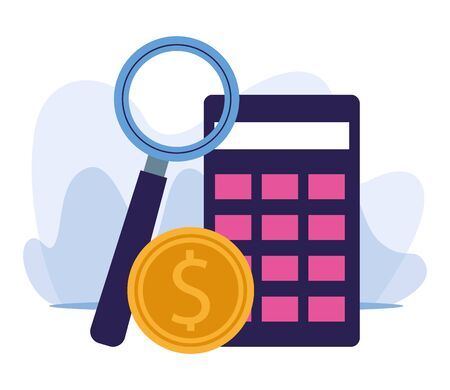1. Understanding the Basics of College Savings
For many American families, planning for college expenses is a major financial priority. With tuition and related costs continuing to rise, starting to save early can make a significant difference in reducing student debt and giving your child more options for their education. Before selecting a college savings plan, it’s important to understand why saving matters and what factors you should think about when comparing different options.
Why Saving for College Matters
College costs include more than just tuition—they also cover fees, books, housing, and even personal expenses. According to the College Board, the average annual cost for a four-year public university (in-state) is over $27,000 per year, while private colleges can exceed $55,000 annually. By saving ahead of time, you can:
- Reduce or avoid student loan debt
- Give your child more choices in selecting a school
- Take advantage of tax benefits and compound growth
- Reduce financial stress as college approaches
Key Factors to Consider Before Choosing a Plan
Every family’s situation is unique. Here are some important questions to ask yourself before picking a college savings plan:
- Who will own and control the account? Some plans let parents maintain control, while others transfer ownership to the child at a certain age.
- What are the tax advantages? Certain accounts offer federal and sometimes state tax benefits on your contributions or earnings.
- How flexible are the funds? Can the money be used only for qualified education expenses, or for other purposes if needed?
- Are there any impact on financial aid? Different accounts are treated differently by FAFSA when calculating eligibility for aid.
- What investment options are available? Some plans offer a range of investment portfolios; others might be more limited.
Comparison Table: Key Features of 529 Plans vs. Custodial Accounts
| 529 Plan | Custodial Account (UGMA/UTMA) | |
|---|---|---|
| Account Owner Control | Parent/guardian retains control | Child gains control at legal age (18 or 21) |
| Tax Benefits | Earnings grow tax-free if used for qualified education expenses; state tax deductions may apply | Earnings taxed at childs rate; no specific education-related tax breaks |
| Use of Funds | Must be used for qualified education expenses (with some exceptions) | No restrictions; can be used for any purpose once child reaches legal age |
| Impact on Financial Aid | Treated as parent asset (less impact on aid) | Treated as students asset (greater impact on aid) |
| Investment Choices | A range of investment portfolios offered by plan provider | Broad selection of stocks, bonds, mutual funds allowed |
The Bottom Line on Getting Started
Savings plans like 529s and custodial accounts each have their own pros and cons. Understanding the basics will help you make an informed decision that fits your family’s needs and educational goals.
2. What is a 529 Plan?
A 529 plan is a popular college savings account in the United States designed to help families save for higher education expenses. These plans are sponsored by states, state agencies, or educational institutions and offer unique benefits that make them a favorite among parents planning for their kids’ future education.
How Does a 529 Plan Work?
When you open a 529 plan, you contribute money to an investment account dedicated to qualified education expenses, like tuition, room and board, books, and fees. The money in your 529 plan can be invested in various options, typically mutual funds or age-based portfolios that automatically adjust as your child gets closer to college age.
Key Features of 529 Plans
| Feature | Description |
|---|---|
| Tax Benefits | Contributions grow tax-free and withdrawals are federal income tax-free when used for qualified education expenses. Many states also offer state income tax deductions or credits for contributions. |
| Investment Options | You can choose from different investment portfolios, including age-based options that become more conservative as college approaches. |
| Account Control | The account owner (usually a parent) controls the assets, even after the beneficiary turns 18. |
| Flexibility | If your child doesn’t go to college, you can change the beneficiary to another family member or use the funds for other qualifying educational opportunities. |
| Contribution Limits | High contribution limits—often $300,000 or more depending on the state—make it possible to save significantly over time. |
| State-Specific Rules | Plans vary by state. You don’t have to use your home state’s plan, but some states give extra perks if you do. |
Common Rules You Should Know
- Qualified Expenses: Tuition, mandatory fees, books, supplies, computers, and sometimes K-12 tuition up to $10,000 per year.
- Non-Qualified Withdrawals: If you withdraw money for anything other than qualified education expenses, you’ll pay income tax and a 10% penalty on the earnings portion.
- Changing Beneficiaries: You can change the beneficiary to another family member without penalty if your original beneficiary doesn’t need the funds.
- No Age Limits: There are no age or income restrictions for contributors or beneficiaries.
Who Can Benefit from a 529 Plan?
A 529 plan is ideal for families looking for a simple and tax-efficient way to save for college. It works especially well if you want flexibility in choosing schools (funds can be used at most accredited colleges nationwide) and control over how the savings are managed until they’re needed.

3. What is a Custodial Account (UGMA/UTMA)?
When planning for your childs college education, you might come across custodial accounts, often known as UGMA or UTMA accounts. These are flexible savings vehicles that allow adults to save and invest money on behalf of a minor until they reach adulthood. Lets break down what custodial accounts are, how they work, and their pros and cons compared to other college savings plans.
How Custodial Accounts Are Structured
Custodial accounts are set up under two main laws: the Uniform Gifts to Minors Act (UGMA) and the Uniform Transfers to Minors Act (UTMA). Both types let adults transfer assets to a child without setting up a formal trust. The account is managed by a custodian—usually a parent or close relative—who has a fiduciary responsibility to manage the funds for the minors benefit. Once the child reaches the “age of majority” (usually 18 or 21, depending on the state), control of the account shifts entirely to them.
Who Controls the Money?
| Account Stage | Control |
|---|---|
| Before Age of Majority | Custodian manages assets for the child’s benefit |
| After Age of Majority | The child gains full legal control over all funds |
This means parents can make decisions about investments and withdrawals while the child is still a minor, but once the child becomes an adult, they can use the money however they choose.
Flexibility for Education and Other Expenses
One key advantage of custodial accounts is flexibility. Unlike 529 plans, which are designed specifically for education expenses, UGMA and UTMA accounts can be used for nearly anything that benefits the child—education, buying a car, starting a business, or even travel. There are no penalties if funds arent used for college.
Main Features of Custodial Accounts
| Feature | Description |
|---|---|
| Eligible Expenses | No restrictions; can be used for any purpose that benefits the child |
| Investment Choices | Wide variety (stocks, bonds, mutual funds, etc.) |
| Taxation | Earnings taxed at childs rate; may trigger “kiddie tax” |
| Aid Impact | Treated as student asset; can reduce financial aid eligibility more than parental assets do |
| Ownership Transfer | Permanently transfers to child at age of majority |
While custodial accounts offer more spending flexibility than 529 plans, its important to consider that once your child takes control of the funds, you have no say in how theyre used. Additionally, these accounts may impact financial aid eligibility more significantly than 529 plans because they are considered assets owned by the student.
4. 529 Plans vs. Custodial Accounts: Key Differences
When it comes to saving for your child’s college education, two popular options for American families are 529 plans and custodial accounts (like UGMA/UTMA). Understanding the differences between these can help you make the best decision for your family’s future.
What Is a 529 Plan?
A 529 plan is a tax-advantaged savings account specifically designed for education expenses. These plans are sponsored by states or educational institutions and offer significant tax benefits if used for qualified education costs like tuition, room and board, and textbooks.
What Is a Custodial Account?
Custodial accounts, such as UGMA (Uniform Gifts to Minors Act) or UTMA (Uniform Transfers to Minors Act), allow adults to transfer assets to a minor. The funds can be used for anything that benefits the child, not just education, but the money becomes the child’s property once they reach the age of majority (usually 18 or 21).
Side-by-Side Comparison
| Feature | 529 Plan | Custodial Account (UGMA/UTMA) |
|---|---|---|
| Purpose | Primarily for qualified education expenses | Any purpose that benefits the child |
| Tax Benefits | Earnings grow tax-free; withdrawals are tax-free if used for qualified education expenses; some states offer tax deductions/credits on contributions | Earnings taxed at childs rate; no special tax benefits for education use |
| Control Over Funds | Account owner (usually parent) controls funds indefinitely | Funds must be turned over to the child at legal adulthood (age varies by state) |
| Financial Aid Impact | Treated as parent asset—less impact on financial aid eligibility | Treated as student asset—greater impact on financial aid eligibility |
| Contribution Limits | No annual federal limit; high overall limits (varies by state, often $300,000+) | No specific contribution limits, but gifts above IRS threshold may incur taxes |
| Flexibility of Use | If not used for education, withdrawals subject to taxes and penalties on earnings only | No restrictions—can be used for any purpose once child takes control, including non-education expenses |
| Investment Options | Limited to plan choices set by state or plan provider | Wide range of investments: stocks, bonds, mutual funds, etc. |
| Transferability | Can change beneficiary to another eligible family member if needed | Irrevocable—cannot change beneficiary after account is established |
Pros and Cons for American Families
529 Plan Pros:
- Tax-free growth and withdrawals for education expenses
- Parent retains control over funds
- Presents less impact on financial aid applications
- High contribution limits
529 Plan Cons:
- Penalties if not used for education
- Narrower investment options
- No flexibility in using funds for non-education purposes without penalty
Custodial Account Pros:
- No restrictions on how funds are used once child reaches adulthood
- Broad investment choices
- Simpler setup with no state residency requirement
Custodial Account Cons:
- Larger impact on financial aid eligibility
- No special tax benefits for educational use
- The child gains full control at adulthood—even if parents disagree with their spending decisions
Main Considerations for Families in the U.S.
If your main goal is saving specifically for college and maximizing tax advantages, a 529 plan is often the better fit. If you want more flexibility in how the money can be spent or invested—and you’re comfortable with your child taking control at adulthood—a custodial account might work well. Consider your family’s needs, your comfort level with control over the funds, and how you want savings to affect future financial aid before choosing.
5. Choosing the Best Option for Your Family
When it comes to picking between a 529 plan and a custodial account (like a UGMA or UTMA), there’s no one-size-fits-all answer. Your family’s financial situation, goals, and long-term needs should guide your decision. Here are some practical tips to help you choose the best college savings plan:
Assess Your Financial Priorities
Start by asking yourself what matters most to your family. Are you focused solely on saving for college, or do you want more flexibility in how funds can be used? Do you expect your child to attend an out-of-state school, or are you hoping they’ll stay closer to home? These questions can help narrow down your options.
529 Plans vs Custodial Accounts: Quick Comparison
| Feature | 529 Plan | Custodial Account (UGMA/UTMA) |
|---|---|---|
| Primary Use | Education expenses (tax-free for qualified use) | Any purpose benefiting the child |
| Tax Benefits | Tax-deferred growth; tax-free withdrawals for education; possible state tax deductions | First $1,250 unearned income is tax-free; next $1,250 taxed at child’s rate; over $2,500 at parent’s rate (2024) |
| Control of Assets | Account owner controls funds even after beneficiary turns 18/21 | Child gains full control at age of majority (usually 18 or 21) |
| Financial Aid Impact | Treated as parental asset (less impact on aid) | Treated as student asset (greater impact on aid) |
| Investment Options | Limited to plan’s offerings (typically mutual funds or age-based portfolios) | Wide range (stocks, bonds, mutual funds, etc.) |
| Contribution Limits | High annual and lifetime limits ($10K+ per year; $300K+ total) | No official limit but subject to federal gift tax rules ($18K/year per donor in 2024) |
Consider Flexibility and Control
If you want maximum flexibility for how the money is used—maybe your child won’t go to college or will need funds for something else—a custodial account allows broader use. However, if your priority is maximizing college savings with tax benefits and keeping some control over the money after your child turns 18, a 529 plan might be a better fit.
Think About Tax Implications and Financial Aid
A 529 plan generally offers better tax advantages and has less impact on financial aid eligibility than a custodial account. If qualifying for need-based financial aid is important for your family, this could be a deciding factor.
Questions to Ask Yourself:
- Do I need the money to grow tax-free?
- Will my child need funds for non-education expenses?
- How important is controlling the assets after my child turns 18?
- Will we likely qualify for financial aid?
- How much do we want to contribute each year?
Get Help If You Need It
If youre unsure which route is best, consider speaking with a financial advisor who understands your familys goals and can walk you through the pros and cons based on your unique circumstances. The right choice can make a big difference in helping your child reach their educational dreams—and keep your own finances on track.


